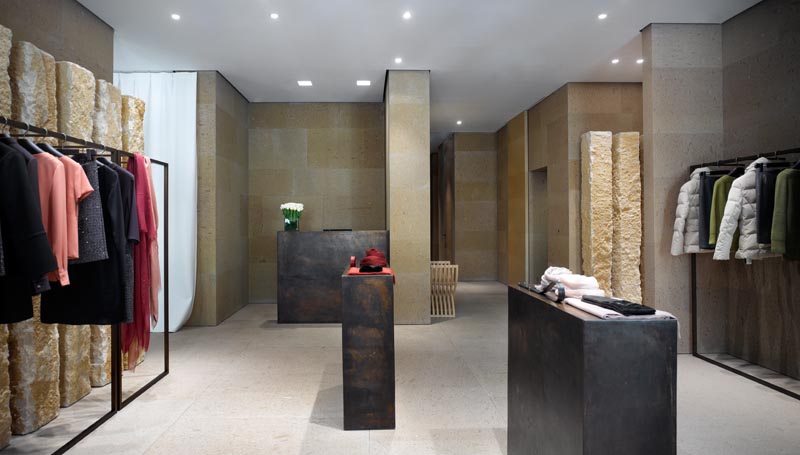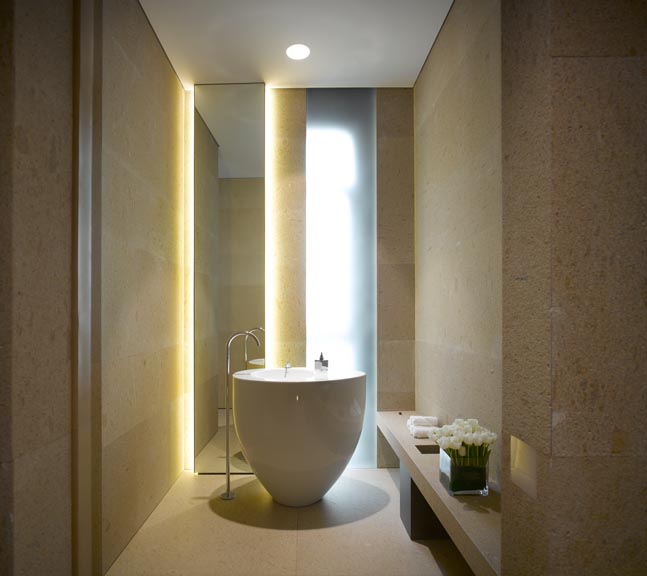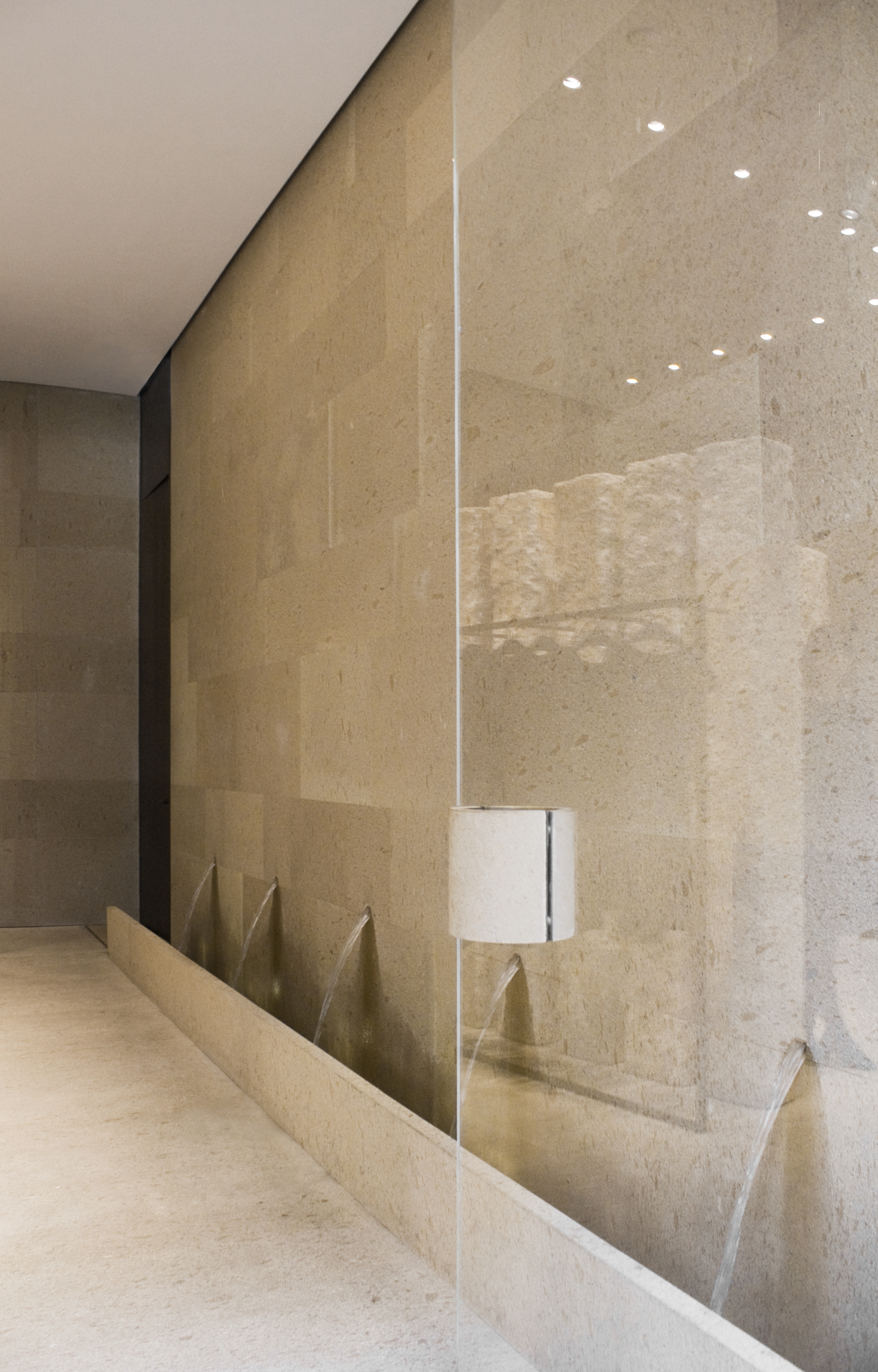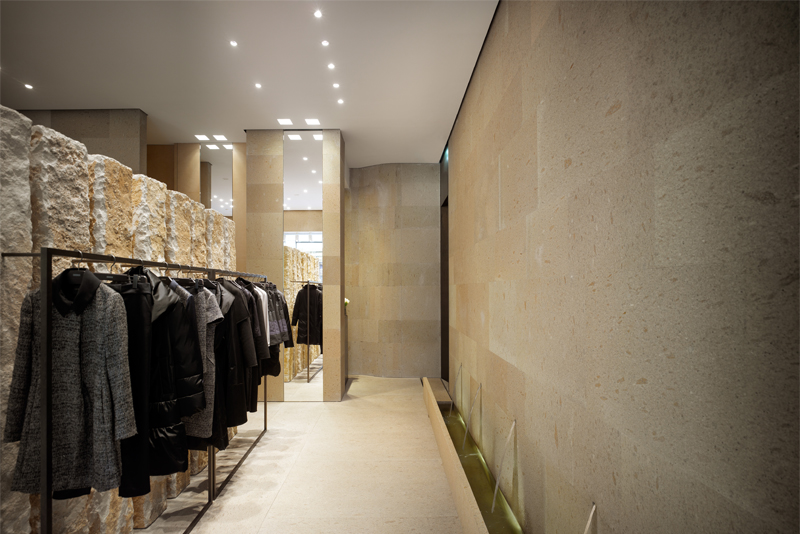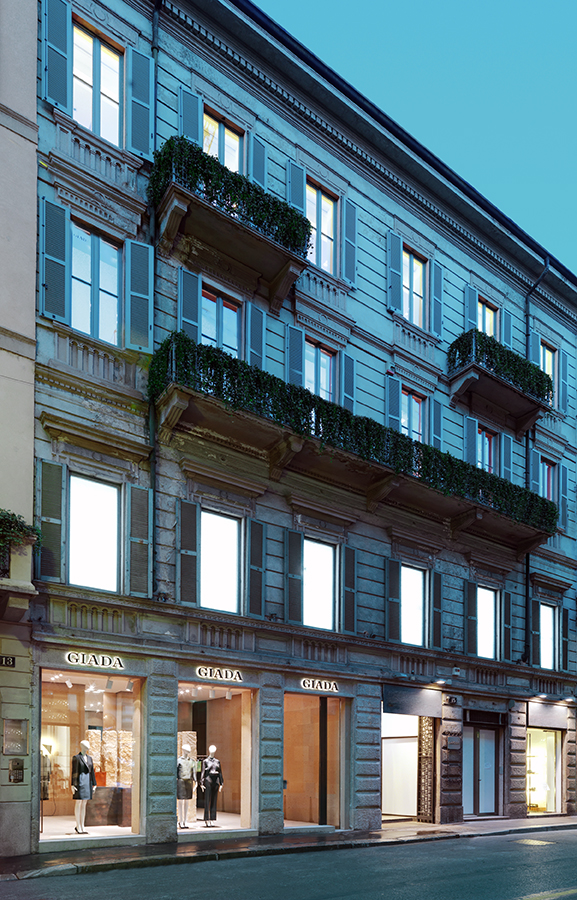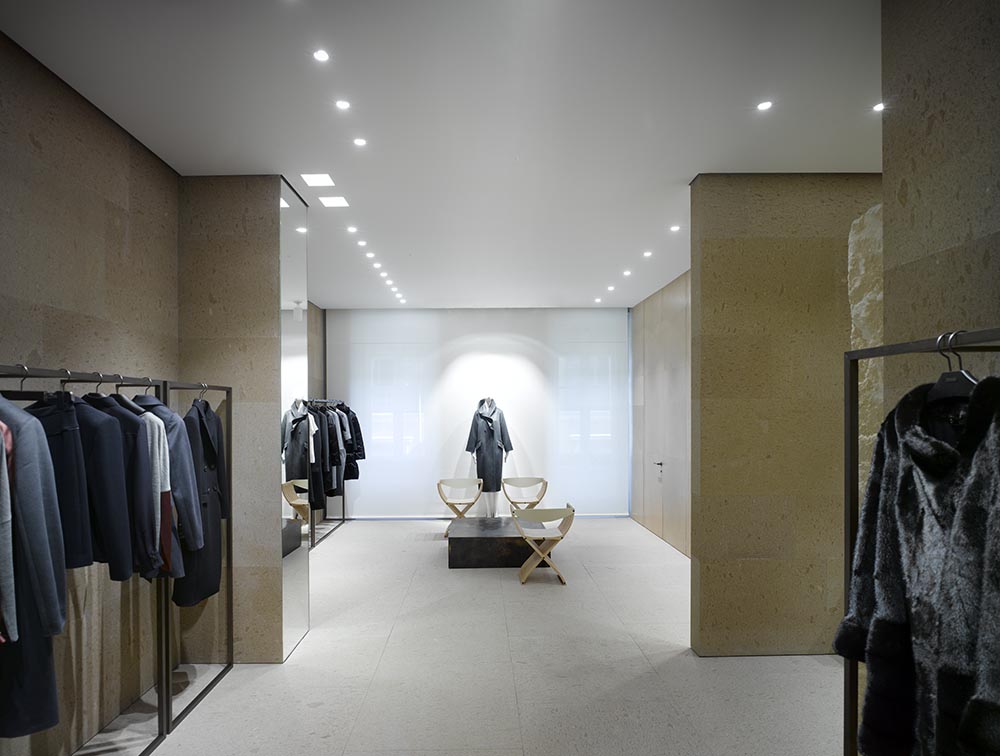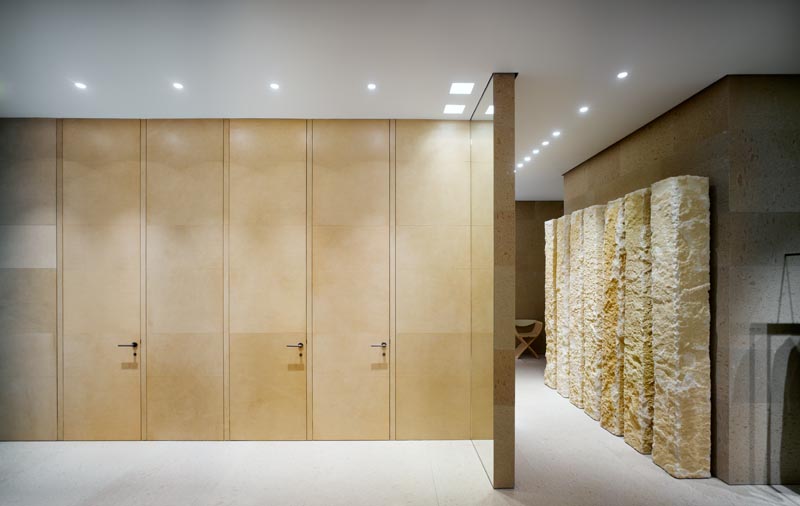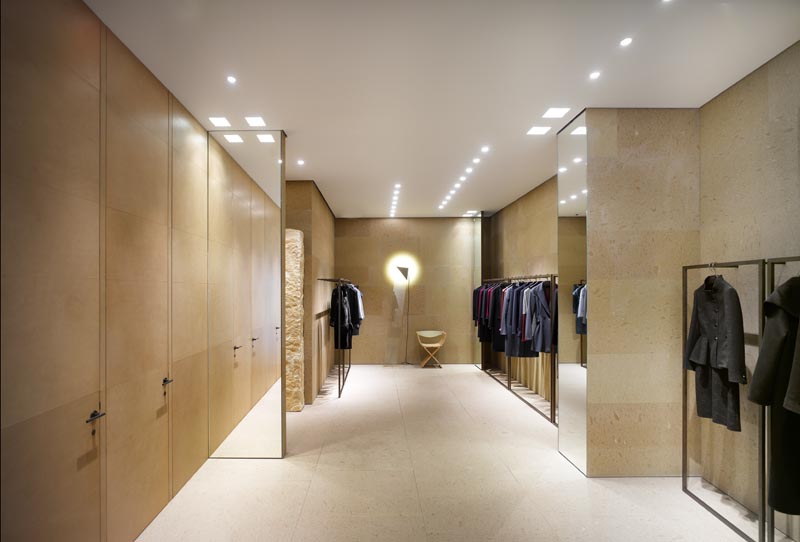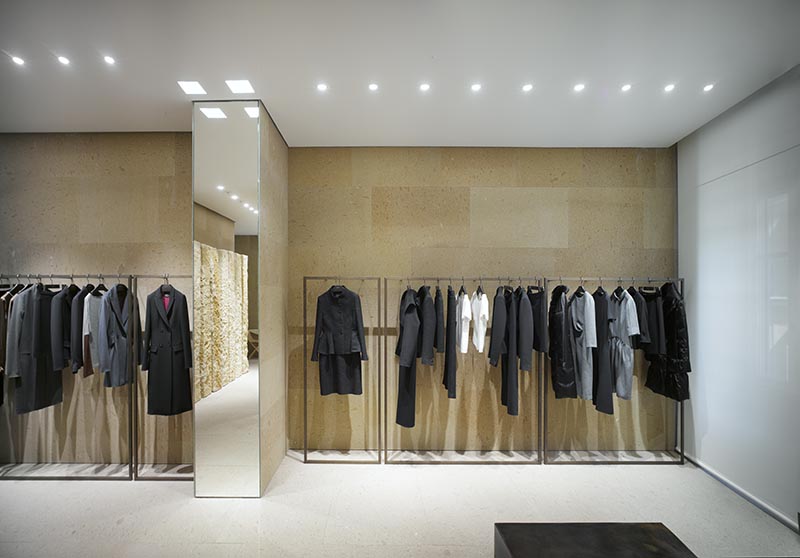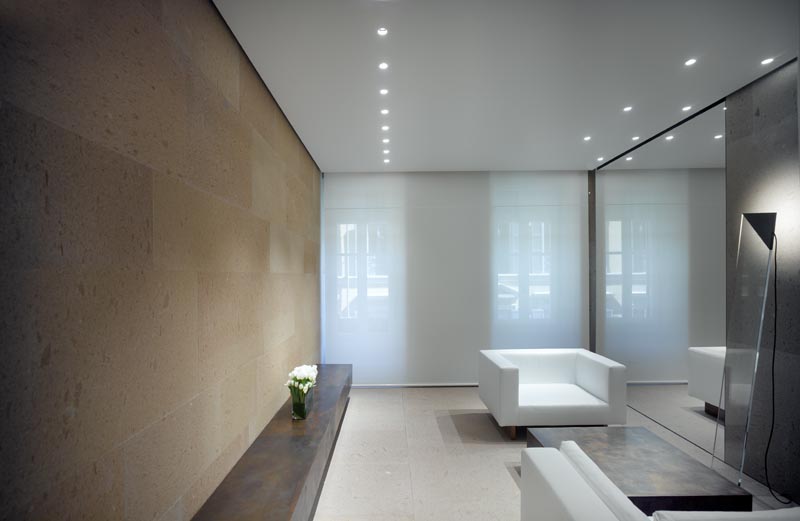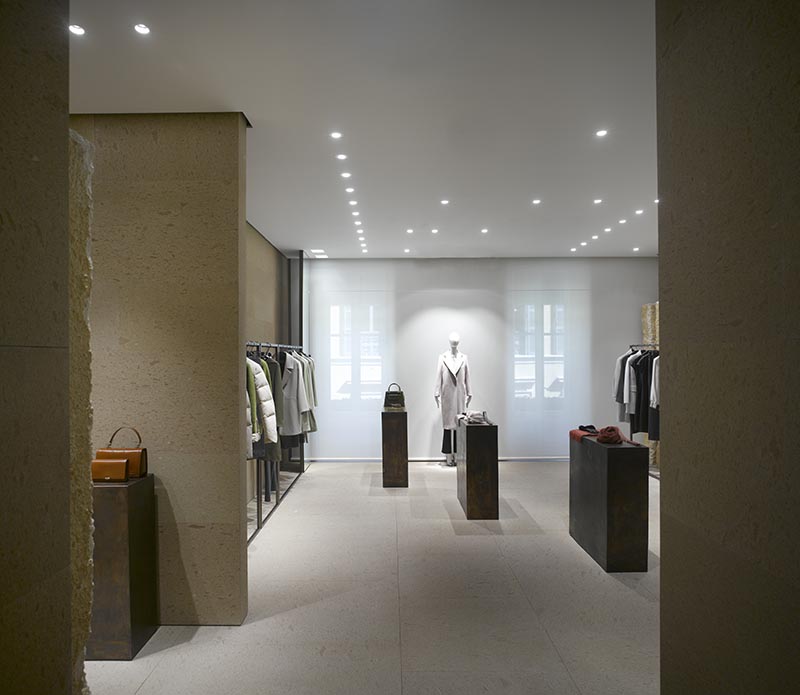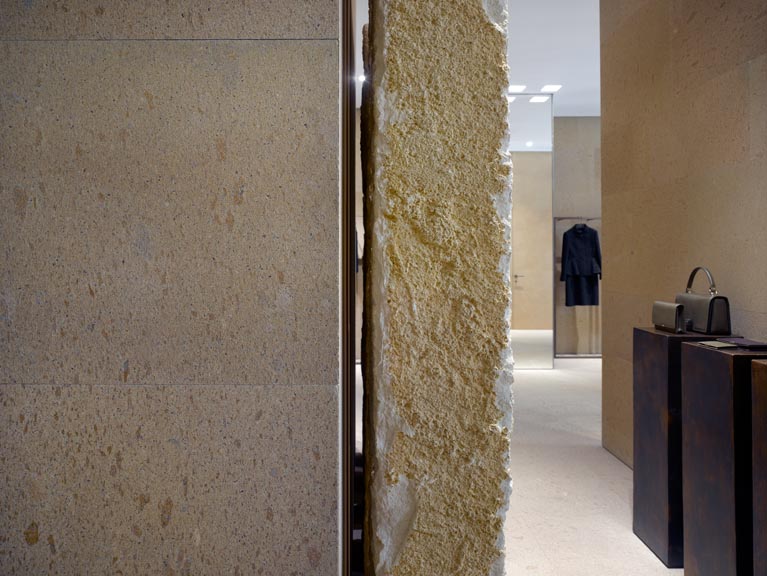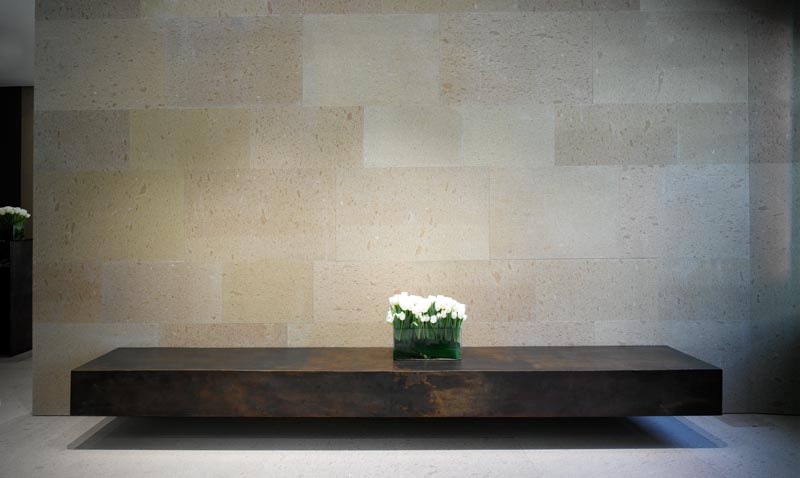GIADA
Milan, 2013
Claudio Silvestrin’s boutique design for GIADA is an image of contemporary, yet timeless architecture, where the ancient and the modern embrace one another in a calm and elegant space, giving full expression to GIADA fashion.
Truly natural materials and elements: life-giving water, stone from the Dolomites, cast bronze and natural leather are united in harmony through a linear and decisive geometry, rich in sophisticated detail. Thus, an architecture that forms the perfect marriage to the extraordinary quality of GIADA fashion.
The first flagship store Giada is in the heart of Milan, in the fashion street Via Montenapoleone, and it was opened in 2013. The project consists in the refurbishment of a building erected before the 19th century, even if the most ancient documentation dates 1831.
The interior has been completely transformed in a modern way, but the façade has not been changed because it’s listed. The space has been thought without any traditional furniture and with a strong presence of natural materials and elements arranged in two stories of the ancient building. Walls and floors in white porphyry water jet finish create a mono-materic shell that expands the visual perception of the space.
All the pictures © Giulia Ricagni, © James Morris, © Karla Otto.
Giada
Milan, 2013
Claudio Silvestrin’s boutique design for GIADA is an image of contemporary, yet timeless architecture, where the ancient and the modern embrace one another in a calm and elegant space, giving full expression to GIADA fashion.
Truly natural materials and elements: life-giving water, stone from the Dolomites, cast bronze and natural leather are united in harmony through a linear and decisive geometry, rich in sophisticated detail. Thus, an architecture that forms the perfect marriage to the extraordinary quality of GIADA fashion.
The first flagship store Giada is in the heart of Milan, in the fashion street Via Montenapoleone, and it was opened in 2013. The project consists in the refurbishment of a building erected before the 19th century, even if the most ancient documentation dates 1831.
The interior has been completely transformed in a modern way, but the façade has not been changed because it’s listed. The space has been thought without any traditional furniture and with a strong presence of natural materials and elements arranged in two stories of the ancient building. Walls and floors in white porphyry water jet finish create a mono-materic shell that expands the visual perception of the space.
All the pictures © Giulia Ricagni, © James Morris, © Karla Otto.
Giada
Milan, 2013
Claudio Silvestrin’s boutique design for GIADA is an image of contemporary, yet timeless architecture, where the ancient and the modern embrace one another in a calm and elegant space, giving full expression to GIADA fashion.
Truly natural materials and elements: life-giving water, stone from the Dolomites, cast bronze and natural leather are united in harmony through a linear and decisive geometry, rich in sophisticated detail. Thus, an architecture that forms the perfect marriage to the extraordinary quality of GIADA fashion.
The first flagship store Giada is in the heart of Milan, in the fashion street Via Montenapoleone, and it was opened in 2013. The project consists in the refurbishment of a building erected before the 19th century, even if the most ancient documentation dates 1831.
The interior has been completely transformed in a modern way, but the façade has not been changed because it’s listed. The space has been thought without any traditional furniture and with a strong presence of natural materials and elements arranged in two stories of the ancient building. Walls and floors in white porphyry water jet finish create a mono-materic shell that expands the visual perception of the space.
